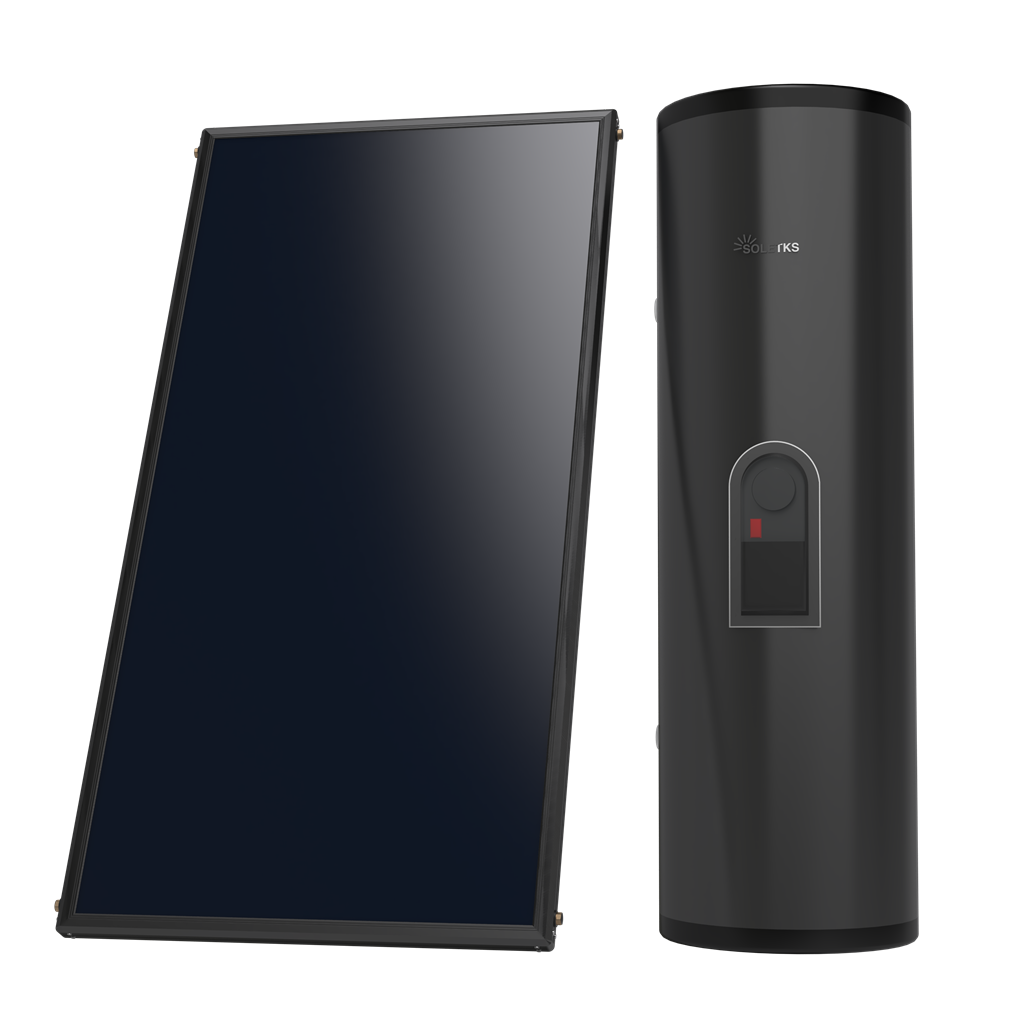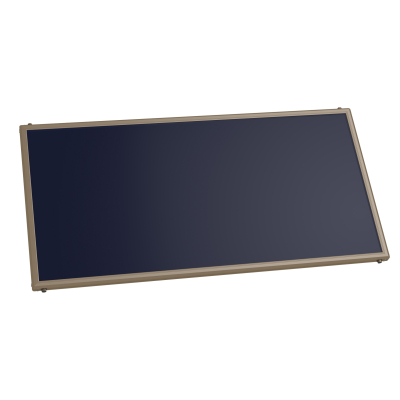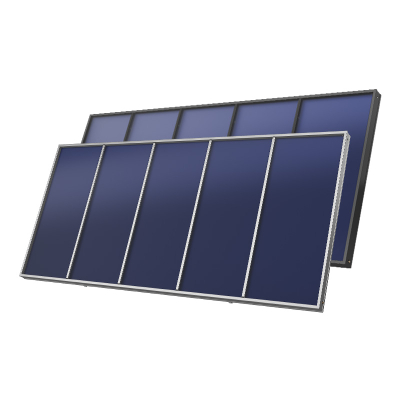Flat Plate Solar Collector: A Comprehensive Guide to Design, Operation, and Benefits
Flat Plate Solar Collector: A Comprehensive Guide to Design, Operation, and Benefits
As Designer at Solteks Group, under our Soletks brand, I'm excited to share my knowledge on a vital renewable energy technology: the flat plate solar collector. These collectors are a cornerstone of solar thermal systems worldwide, offering a simple yet effective way to harness the sun's energy for heating applications. Whether you're an engineer, homeowner, or simply curious about sustainable energy, this guide will provide a comprehensive overview of their design, operation, and benefits. With the rising demand for sustainable energy solutions, understanding the intricacies of flat plate solar collectors is more crucial than ever. They represent a reliable and cost-effective method to reduce our reliance on traditional energy sources. In regions like Europe, Latin America, and the MENA region, flat plate collectors are particularly dominant, making them a key player in the global transition to renewable energy.
What is a Flat Plate Solar Collector?
A flat plate solar collector is a device designed to capture solar energy and convert it into usable heat. It’s commonly used for domestic hot water, space heating, and industrial process heating. Its straightforward design, durability, and cost-effectiveness make it a popular choice for various applications. According to research from Penn State University, flat plate solar collectors are among the most fundamental and widely used solar thermal technologies.
Key Components of a Flat Plate Collector
Understanding the components is crucial to appreciating how these collectors function effectively:
Absorber Plate: Typically a dark, flat surface made of metal (often copper or aluminum) with a selective coating to maximize solar energy absorption.
Glazing Cover: A transparent glass or polycarbonate cover that allows sunlight to pass through while minimizing heat loss due to convection and radiation.
Fluid Tubes: Tubes attached to the absorber plate through which a heat transfer fluid (water, glycol antifreeze solution, or air) circulates to carry the absorbed heat away.
Insulation: Located on the back and sides of the collector to reduce heat loss to the environment.
Support Structure: A frame that provides structural support and facilitates mounting on roofs or other surfaces.
How Flat Plate Solar Collectors Work
The operational principle of a flat plate solar collector is quite simple, yet effective:
Sunlight passes through the glazing cover and strikes the absorber plate.
The absorber plate heats up as it absorbs the solar radiation.
The heat is transferred to the fluid circulating through the tubes in contact with the absorber plate.
The heated fluid is then pumped to a storage tank or directly used for heating purposes.
This process allows for efficient heat transfer, making flat plate solar collectors a reliable choice for solar thermal applications.
Sizing and Applications of Flat Plate Collectors
The size of the flat plate solar collector and the overall system depends on the specific application and energy demand. For typical household applications:
Collector Size: Common sizes range from 3x7 ft (21 ft²) to 4x8 ft (32 ft²).
Domestic Water Heating: A general rule of thumb is 10–16 ft² of collector area per person, with 1.5–2 gallons of storage per ft² of collector.
Installation: Collectors are typically oriented towards the equator (south-facing in the Northern Hemisphere) and tilted at an angle optimized for year-round performance.
Remember, proper sizing and orientation are crucial for optimizing performance. Contact Soletks Group for a customized assessment and sizing for your specific needs.
Materials and Efficiency Considerations
The efficiency of a flat plate solar collector is influenced by the materials used and the design of the collector. High-efficiency models incorporate:
Selective Coatings: Special coatings on the absorber plate to enhance solar energy absorption and reduce heat loss.
Durable Materials: Copper tubing, aluminum frames, and tempered glass for long-lasting performance and weather resistance.
Advanced Glazing Films: Improved glazing films for higher performance and economic return.
These advanced features can significantly improve the performance and economic viability of flat plate solar collectors.
The Benefits of Using Flat Plate Solar Collectors
Investing in a flat plate solar collector system offers numerous advantages:
Cost-Effectiveness: Generally more affordable than other solar thermal technologies like evacuated tube collectors.
Durability: Long service life, especially with corrosion-resistant components.
Low Maintenance: Typically requires less maintenance compared to concentrating solar power systems.
Wide Applicability: Well-suited for climates with substantial solar insolation and can be used for various applications, including water heating and space heating.
Environmental Benefits: Reduces reliance on fossil fuels, lowers carbon emissions, and promotes sustainable energy use.
These benefits make flat plate solar collectors a smart choice for reducing energy costs and promoting environmental sustainability.
Flat Plate Collectors: Market Trends and Global Adoption
Globally, flat plate collectors hold a significant share in the solar thermal market. While evacuated tube collectors lead worldwide due to the Chinese and Indian markets, flat plate collectors are dominant in specific regions. According to recent data:
Europe: Flat plate collectors account for 71.1% of all newly installed solar thermal collectors in 2023.
Latin America and the MENA Region: Flat plate collectors are the dominant technology.
Worldwide: Flat plate collectors represent about 25% of the cumulated capacity in operation and 31.8% of the newly installed capacity.
Despite a slight decrease in overall solar thermal capacity due to technological competition and collector lifespan considerations, the demand for flat plate collectors remains strong in many regions. This is a testament to their reliability and effectiveness.
Flat Plate vs. Evacuated Tube Collectors: Which is Right for You?
When considering solar thermal options, it's essential to compare flat plate solar collectors with evacuated tube collectors. Here's a quick comparison:
Efficiency: Evacuated tube collectors generally have higher efficiency, especially in colder climates, due to their superior insulation.
Cost: Flat plate collectors are typically more cost-effective upfront.
Climate: Flat plate collectors perform well in sunny climates, while evacuated tubes excel in colder, cloudier conditions.
Application: Flat plate collectors are ideal for domestic water heating and low-temperature applications, while evacuated tubes are better suited for high-temperature needs.
The choice depends on your specific requirements, climate, and budget. Consult with Soletks Group to determine the best solution for your needs.
Conclusion: Embrace the Power of Flat Plate Solar Collectors
In conclusion, flat plate solar collectors are a proven and reliable technology for harnessing solar energy. As Designer at Solteks Group, I believe in the potential of these systems to provide sustainable and cost-effective heating solutions for homes and businesses. Whether you're looking to reduce your carbon footprint, lower your energy bills, or invest in a sustainable future, flat plate solar collectors are an excellent choice. Contact us today to learn more about how Soletks can help you harness the power of the sun!





